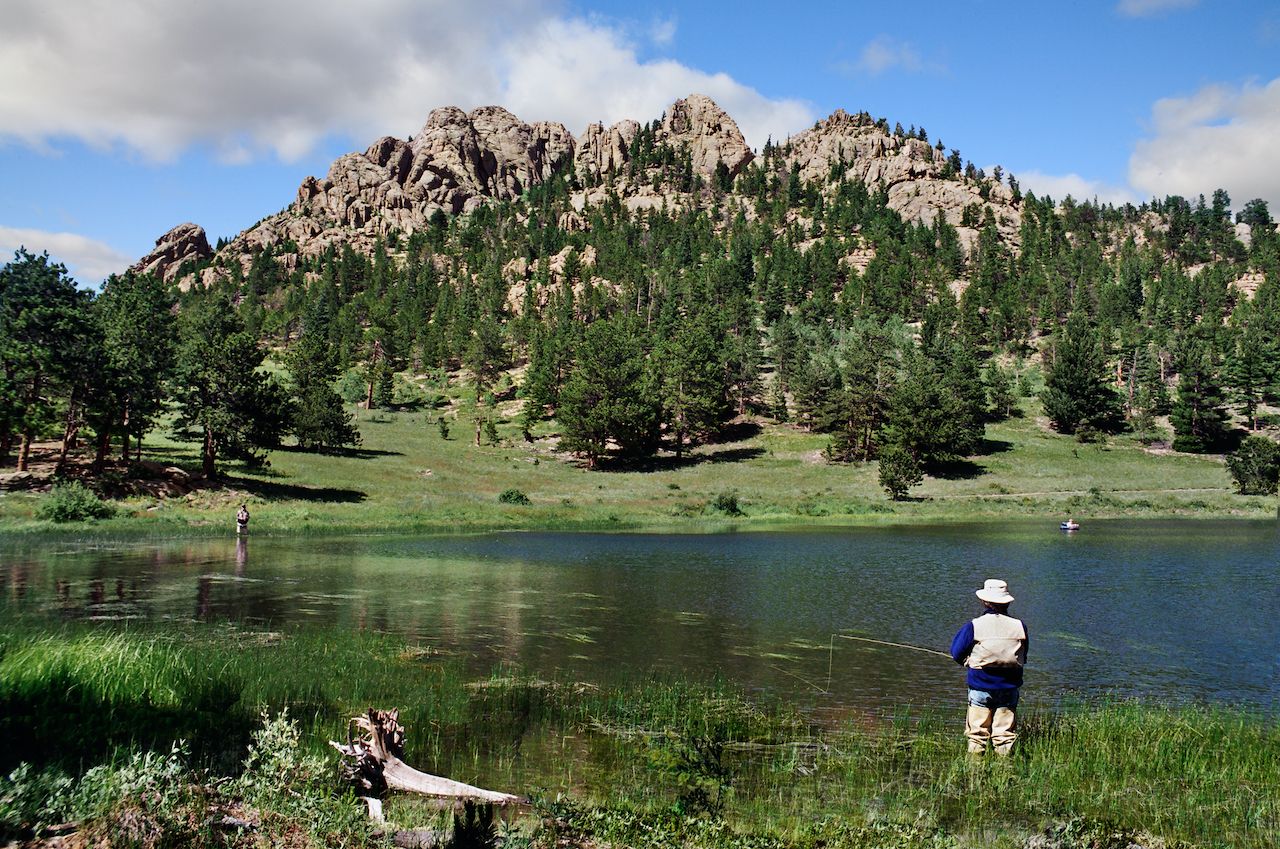Over 4 million people visit Rocky Mountain National Park annually, the vast majority coming in summer and fall. Thing is, venture beyond Trail Ridge Road and you’ll have more open space than you could possibly explore in one lifetime all to yourself. Trailheads are plenty along the park’s main thoroughfare, with hiking and biking access also available by hiking your way into the park from outside the Grand Lake gates. Plan for at least two days in the park, breaking down the below activities into half-day or full-day segments.

Photo: margaret.wiktor/Shutterstock
Hiking — There are 355 miles of hiking trails in Rocky Mountain National Park, from the 0.6-mile loop around Bear Lake to the 3,825-foot upward slog to the summit of Longs Peak. No matter which you choose, come prepared for sudden changes in weather — always have a rain jacket, sturdy hiking shoes, and a hat. Check out some of the park’s best hikes here.
Mountain biking and cycling — Cyclists are permitted on all roads open to motor vehicles, unless otherwise posted. Trail Ridge Road, Old Fall River Road, and Bear Lake Road all offer serious challenges. If you’d prefer to avoid the 4,000-foot uphill climb, local outfitters like New Venture Cycling can chauffeur you to the top. From there, you can fly downhill back to town, going well over 20 miles almost entirely downhill.
Scenic drives — Trail Ridge Road and Old Fall River Road offer a combined 59 miles of windowed adventure through groves of aspen, lowland meadows, raging rivers, subalpine forests, and along serene lakes. Three must-see scenic overlooks along Trail Ridge Road include Fairview Curve, a less-frequented pull off at 10,000 feet; Forest Canyon Overlook, which includes a quick walk out to the viewpoint if you need to stretch your legs; and Many Parks Curve, which looks out over the spookily-named Mummy Range and marks the road closure point in winter.

Photo: Nickolay Stanev/Shutterstock
Wildlife spotting — Classic park favorites are elk, bighorn sheep, moose, mule deer, marmots, and pikas. Birders should pack binoculars for white-tailed ptarmigans and golden eagles. Of course, with “megafauna,” it’s best to keep a distance; the park recommends at least 75 feet. You may pass bigger animals just off the road — who cause the occasional traffic jam — but for the best odds, take a hike. For best viewing show up early or stay into the evening after most cars have exited the park for the day. Check out our Rocky Mountain National Park wildlife guide for more details.
Ranger-led programs — In summer and fall, excellent ranger-led programming can be found at the visitor centers. Think night-sky demonstrations, guided hikes and nature walks, and geology and wildlife talks. There are also Junior Ranger programs for kids, with activity books designed for different age groups and opportunities to earn a park badge. It’s a great way for young ones to learn more and engage with the park. All programs are free.
Camping and backpacking — Rocky has five campgrounds that offer a combined 500-plus campsites across the park. You can reserve three of these on the Rocky Mountain National Park website, while two are first-come, first-served. Wilderness camping is also an option; check our Rocky Mountain National Park camping page for more information.

Photo: Doug Lemke/Shutterstock
Fishing — With a Colorado fishing license that you can buy on the Colorado Parks & Wildlife website, you’re welcome to cast a line into one of the 50 or so angler-friendly lakes and streams that dot the park. In those lakes where the native fish populations are being restored, fishing is catch and release only, and no barbed books are permitted. In some of the lakes, a legal limit of trout may be kept. In order to keep the waters clean and its inhabitants healthy, be sure to disinfect your gear. Read up here on how to do that, and on which waterways are open for which types of fishing at any given time.
Getting out on the water — Rocky Mountain National Park has 150 lakes and, while motorized vehicles aren’t allowed within the park, many of the lakes are open for paddling, kayaking, and canoeing. You can rent your craft at Mountain Paddlers on Grand Lake and at the Lake Estes Marina in Estes Park, among other places. The main campgrounds aren’t too far from the water, so don’t worry about the haul.

Photo: Nelson Sirlin/Shutterstock
Horseback riding — There are two stables in the park: Glacier Creek Stables and Moraine Park Stables. There are also plenty of stables located outside the park, like Sombrero Stables, which also operates a stable inside the park during the summer months, and which offers rides ranging from thirty minutes to two hours. For intrepid riders who want a longer trek on horseback, stables like SK Horses also offer all-day excursions into the park.
Grand Lake’s Fourth of July celebrations — If you happen to be visiting the park over the Independence Day holiday, it’s well worth getting yourself to Grand Lake. The fireworks are incredible, and it’s a great excuse to spend a day on the quieter, unsung-hero side of the park.